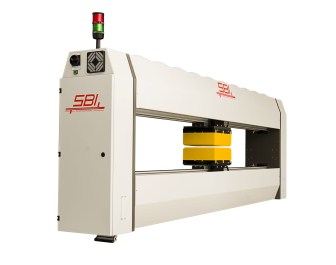President Obama says the federal government is launching competitions to kickstart three more manufacturing innovation institutes, including one focused on Lightweight and Modern Metals Manufacturing Innovation. As part of the White House’s ongoing efforts to encourage investment in US companies, and make US manufacturers more competitive, these centers will be key components in the administration’s billion-dollar National Network for Manufacturing Innovation (NNMI).

As we’ve reported, the first, pilot institute of the 15 planned NNMI centers of excellence was the National Additive Manufacturing Innovation Institute (NAMII), launched last August. NAMII recently funded its first member projects in applied R&D, which include multiple additive manufacturing processes and both metal and polymer materials. All 15 centers are aimed at revitalizing US manufacturing in the defense, energy, space, and commercial sectors.
Initial funding for the three new institutes, to the tune of $200 million, will be provided by five Federal agencies: the departments of Defense, Energy, and Commerce, as well as NASA and the National Science Foundation. All three are expected to become self-sustaining. The new institutes are Next Generation Power Electronics Manufacturing, which will be run by the Department of Energy, and two that will be led by the Department of Defense: Digital Manufacturing and Design Innovation, and Lightweight and Modern Metals Manufacturing Innovation. Like NAMII, they will bring together universities, community colleges, federal agencies, and companies to focus their expertise on core technology areas.
Both DOD-headed institutes will focus on manufacturing technologies that address energy and security needs. The Digital Manufacturing and Design Innovation (DMDI) institute is concerned with digital data that is spread across, and interchanged among, an increasingly wider range of discrete engineering, manufacturing, and maintenance entities, and an expanding, networked supply chain.
Lightweight and Modern Metals Manufacturing Innovation (LM3I) will focus on high-strength metal alloys and third-generation steels that provide a high strength-to-weight ratio to help reduce energy consumption and improve performance. The effort targets vehicles, but isn’t limited to them: alternative energy sources, wind turbines, and medical technology are other applications that could benefit.
The LM3I institute will work with government agencies, academia, and industry members toward four goals to help integrate the design and manufacturing of lighter-weight structures and components. It will also conduct verification and validation of these products via pilot production runs and testing. Both commercial and defense applications will be addressed.
The four key areas are moving existing, innovative, lightweight alloys into mature processes that can be rapidly scaled up for production; cutting the design and integration cycle for implementing new metals in new products; coming up with new automated manufacturing processes that are more competitive and affordable; and educating and training materials design and manufacturing workers in the use of Integrated Computational Materials Engineering (ICME).
Source: http://www.designnews.com/author.asp?section_id=1392&doc_id=264050&itc=dn_analysis_element&






